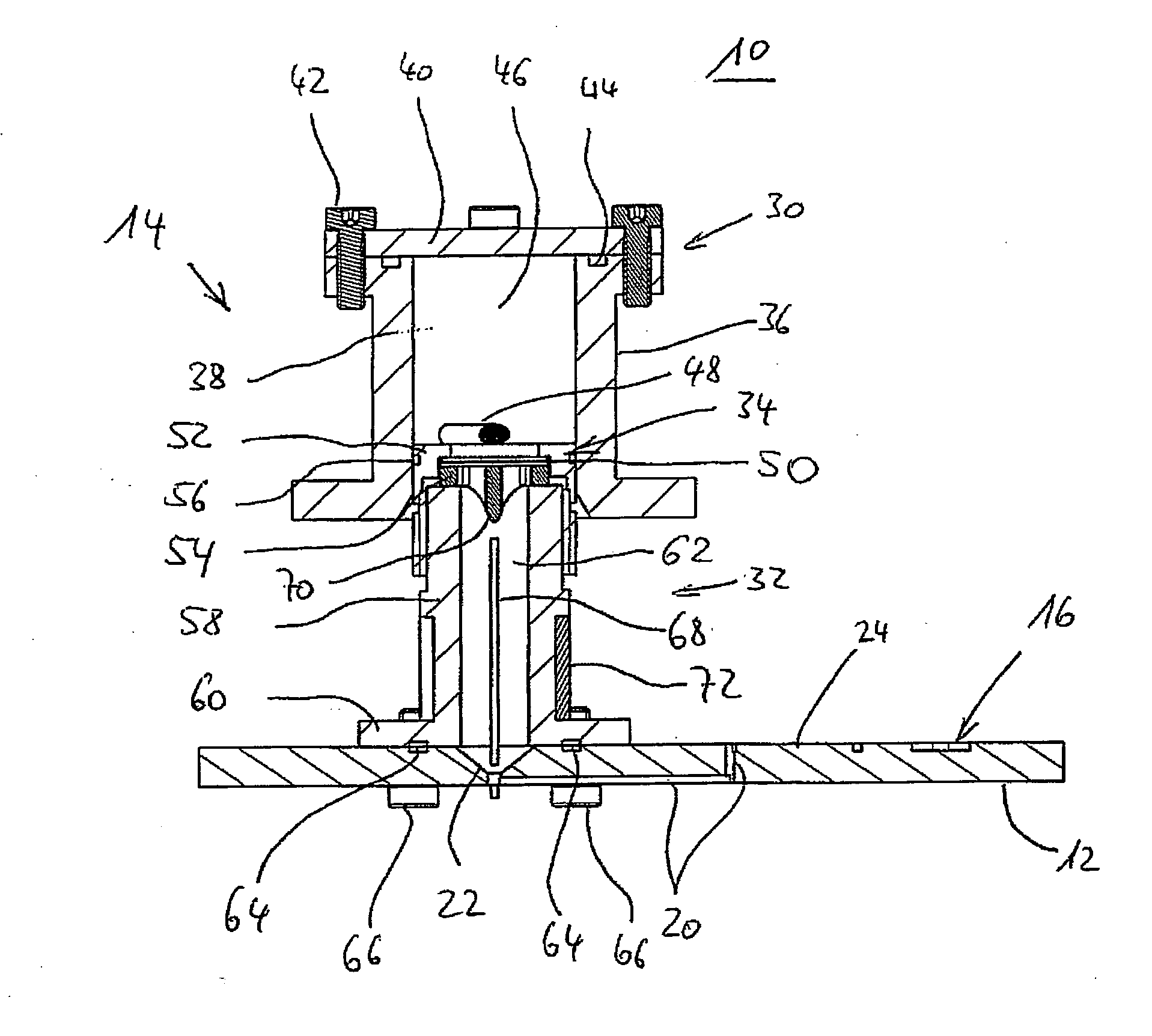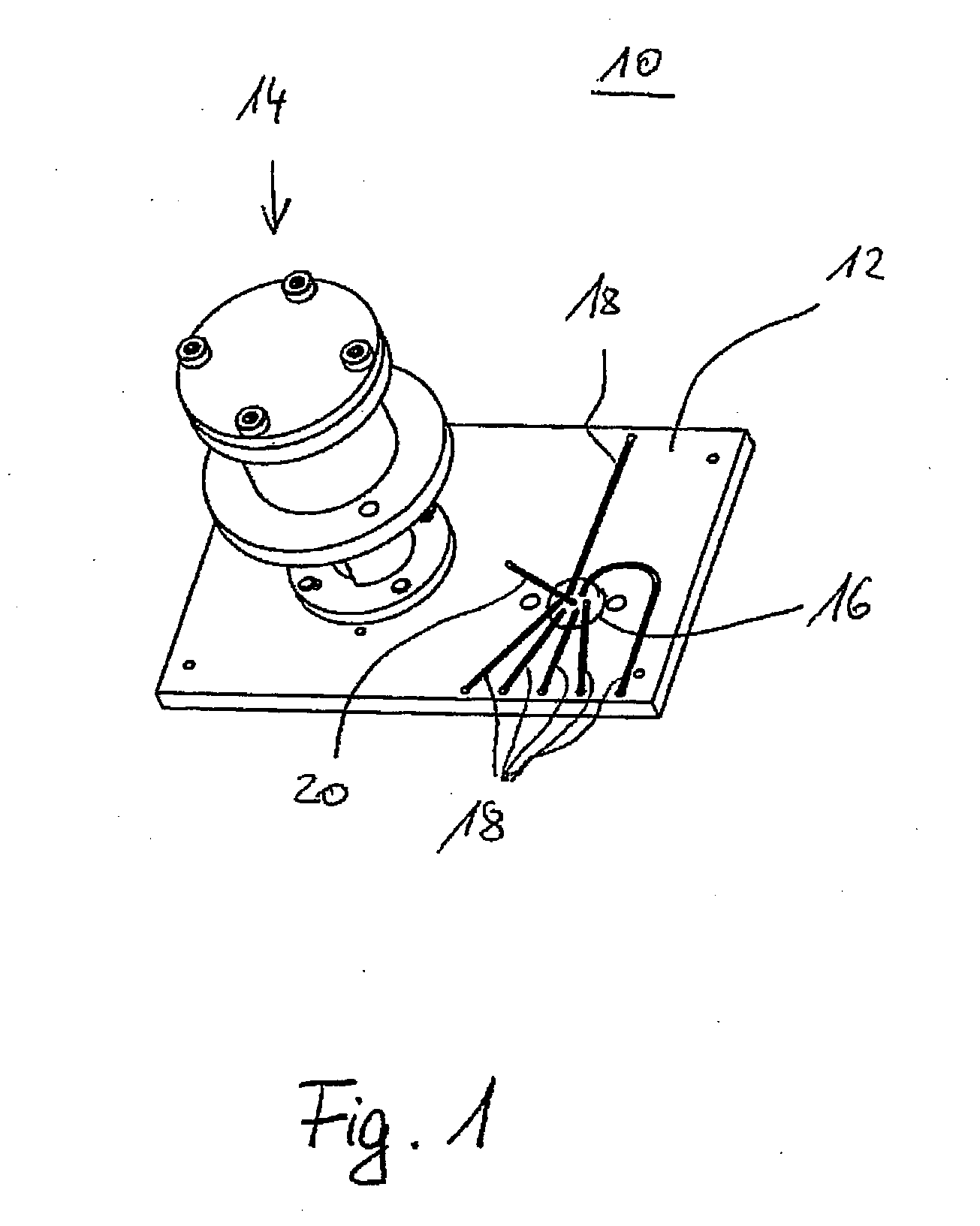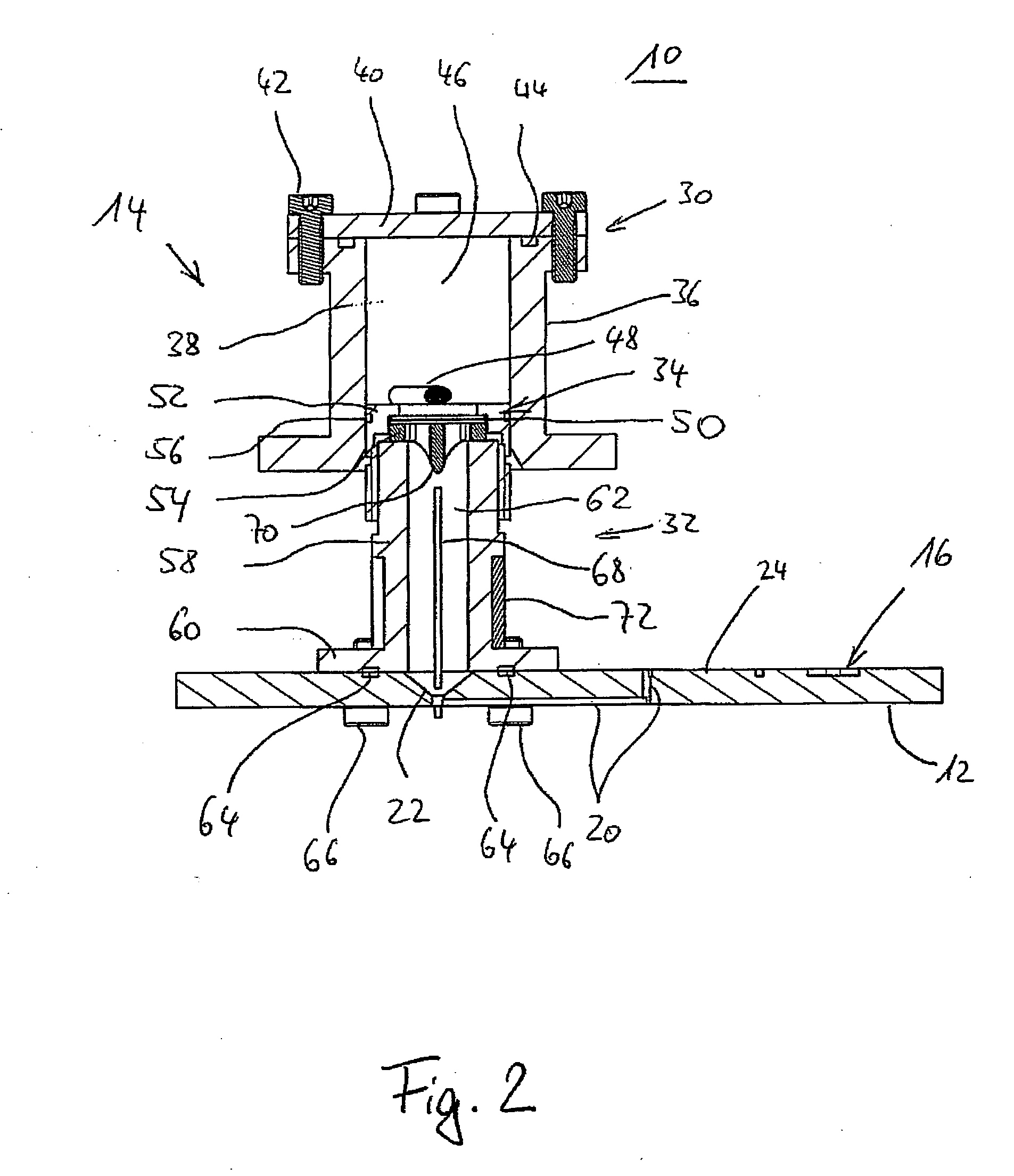Microfluidic extraction and reaction device
a microfluidic and reaction device technology, applied in the direction of gas-gas reaction process, laboratory glassware, separation process, etc., can solve the problem of contamination risk of the transfer from one vessel, not inconsiderable loss of sample material, and transfer of extracted sample material to the microfluidic chip
- Summary
- Abstract
- Description
- Claims
- Application Information
AI Technical Summary
Benefits of technology
Problems solved by technology
Method used
Image
Examples
Embodiment Construction
[0039]In FIGS. 1 and 2, the lab-on-a-chip system 10 according to the invention is illustrated by means of one embodiment with a microfluidic chip 12 and a microfluidic arrangement 14 for the extracting and possibly processing of an extract from a sample and for transfer of same in flowable form to the microfluidic chip 12. The microfluidic chip has a valve arrangement 16, which optionally connects one or more inlet and / or outlet lines 18 to a channel 20 or separates them from it. For example, suitable valve arrangements are described in the currently not yet published patent applications DE 10 2008 002 674.3 or DE 10 2008 002 675.1. These have a valve body which can move relative to the chip, which has a sealing surface and defines at least one channel for optional connection and / or separation of fluid lines in the substrate, while the sealing surface of the valve body lies fluid-tight against a sealing surface of the chip. For this, the valve body is pressed against the chip by mea...
PUM
| Property | Measurement | Unit |
|---|---|---|
| Shape | aaaaa | aaaaa |
Abstract
Description
Claims
Application Information
 Login to View More
Login to View More - R&D
- Intellectual Property
- Life Sciences
- Materials
- Tech Scout
- Unparalleled Data Quality
- Higher Quality Content
- 60% Fewer Hallucinations
Browse by: Latest US Patents, China's latest patents, Technical Efficacy Thesaurus, Application Domain, Technology Topic, Popular Technical Reports.
© 2025 PatSnap. All rights reserved.Legal|Privacy policy|Modern Slavery Act Transparency Statement|Sitemap|About US| Contact US: help@patsnap.com



